The butterflies are coming
Climate change poses a major threat to butterflies but a new generation of Cambridge scientists is working to unlock their secrets and help them thrive.
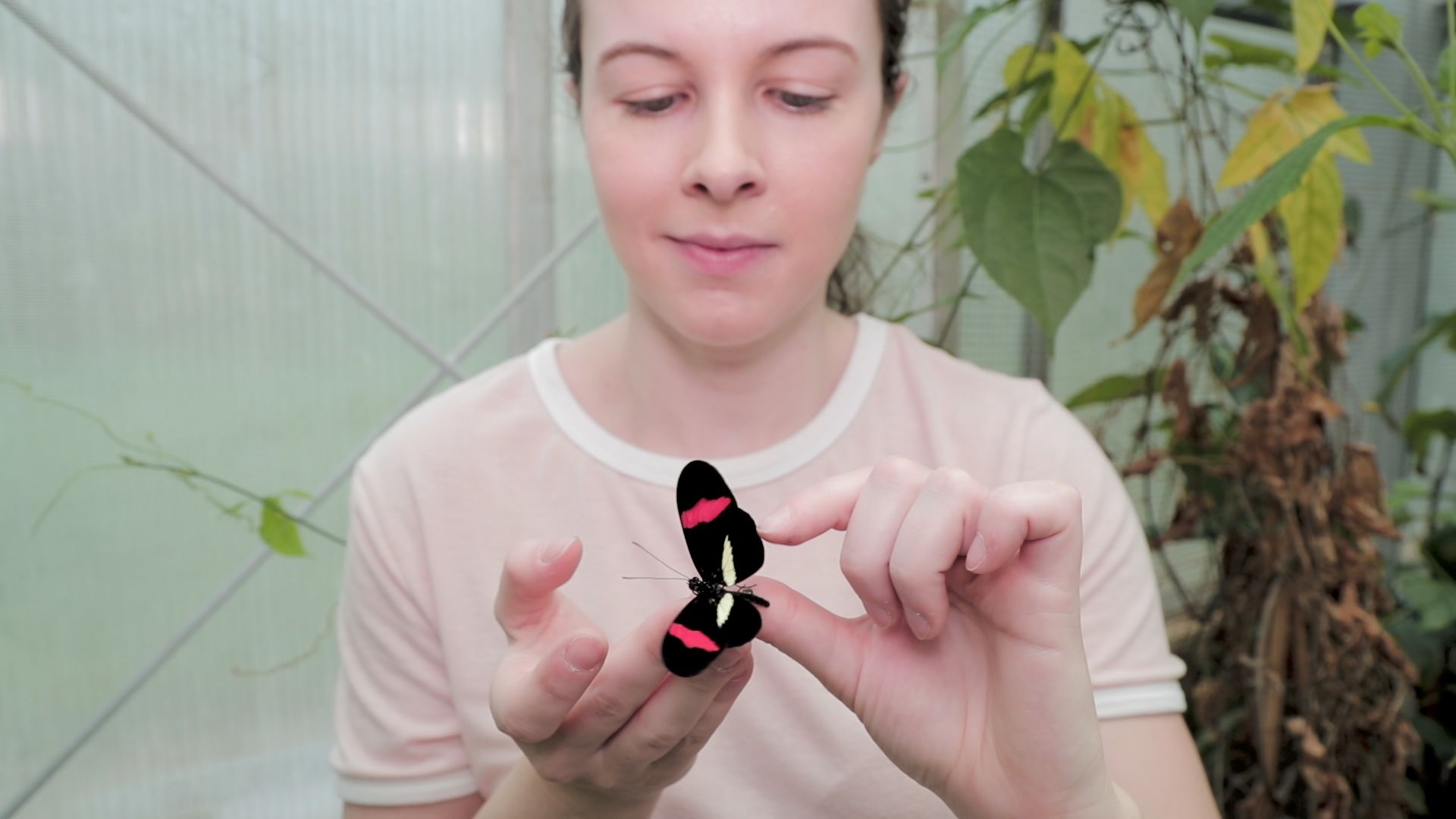
Three-quarters of butterfly species found in the UK have been in decline since the 1970s, and many species can now only be found in a small fraction of their historical range. Equally alarming patterns have been reported across the globe, including in the Netherlands and California.
There are, however, glimmers of hope, especially from the British Isles where climate change is expected to create habitats for existing species and those being driven north.
Butterflies are well served at Cambridge, being the focus of three research groups in the University’s Zoology Department: Radiating Butterflies, Insect Ecology and Butterfly Genetics. Led by Professor Chris Jiggins, the latter studies New World tropical butterflies as a model to understand evolution’s predictability, and the genetic and ecological causes of speciation.
While this research has broad applications in the study of genetics, by unlocking information about how butterflies mate, communicate and adapt to their changing environment, the group’s discoveries are likely to inform conservation work.
Kathy Darragh, a PhD student in the group, focuses on the role played by pheromones in mate choice and speciation. Darragh has already spent years working in the field in Ecuador, Colombia and Panama but currently works with lab populations of Heliconius butterflies in Cambridge.
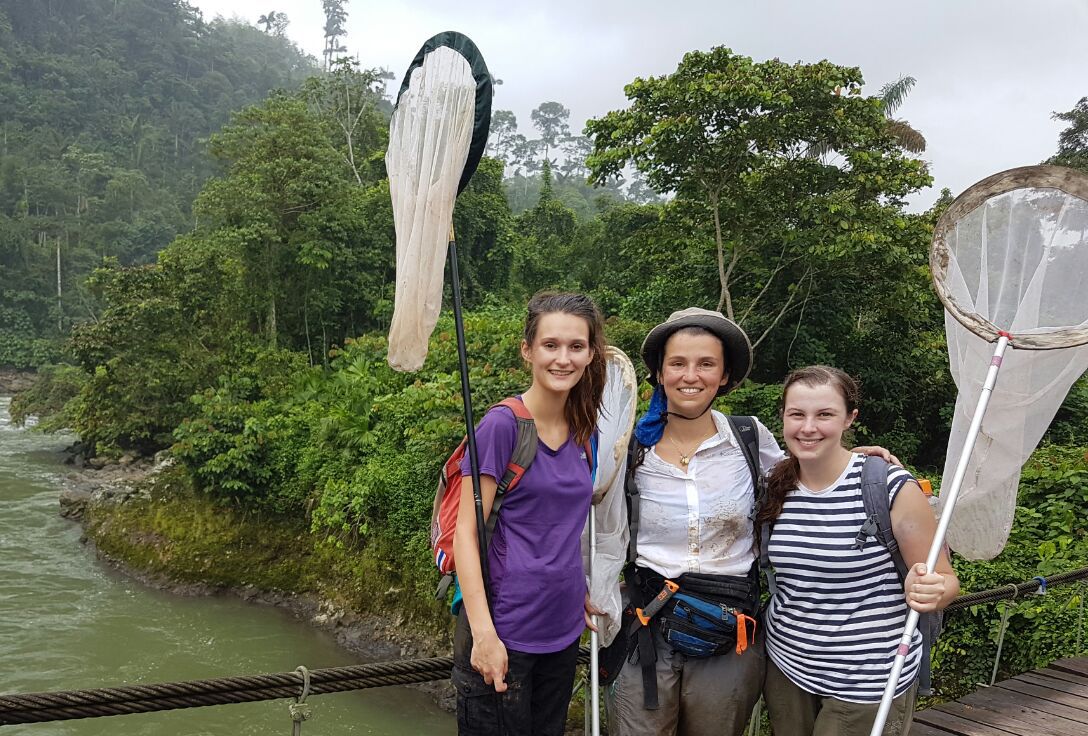
Kathy Darragh (right) with colleagues in Panama. Photo courtesy of Kathy Darragh
Kathy Darragh (right) with colleagues in Panama. Photo courtesy of Kathy Darragh
“You can rear them under different temperature conditions and study how that affects their development,” Darragh explains. “How the following generations respond to the treatments allows us to study evolution in action. We can then learn more about the genetics of adaptation to the environment and that could inform conservation decisions”.
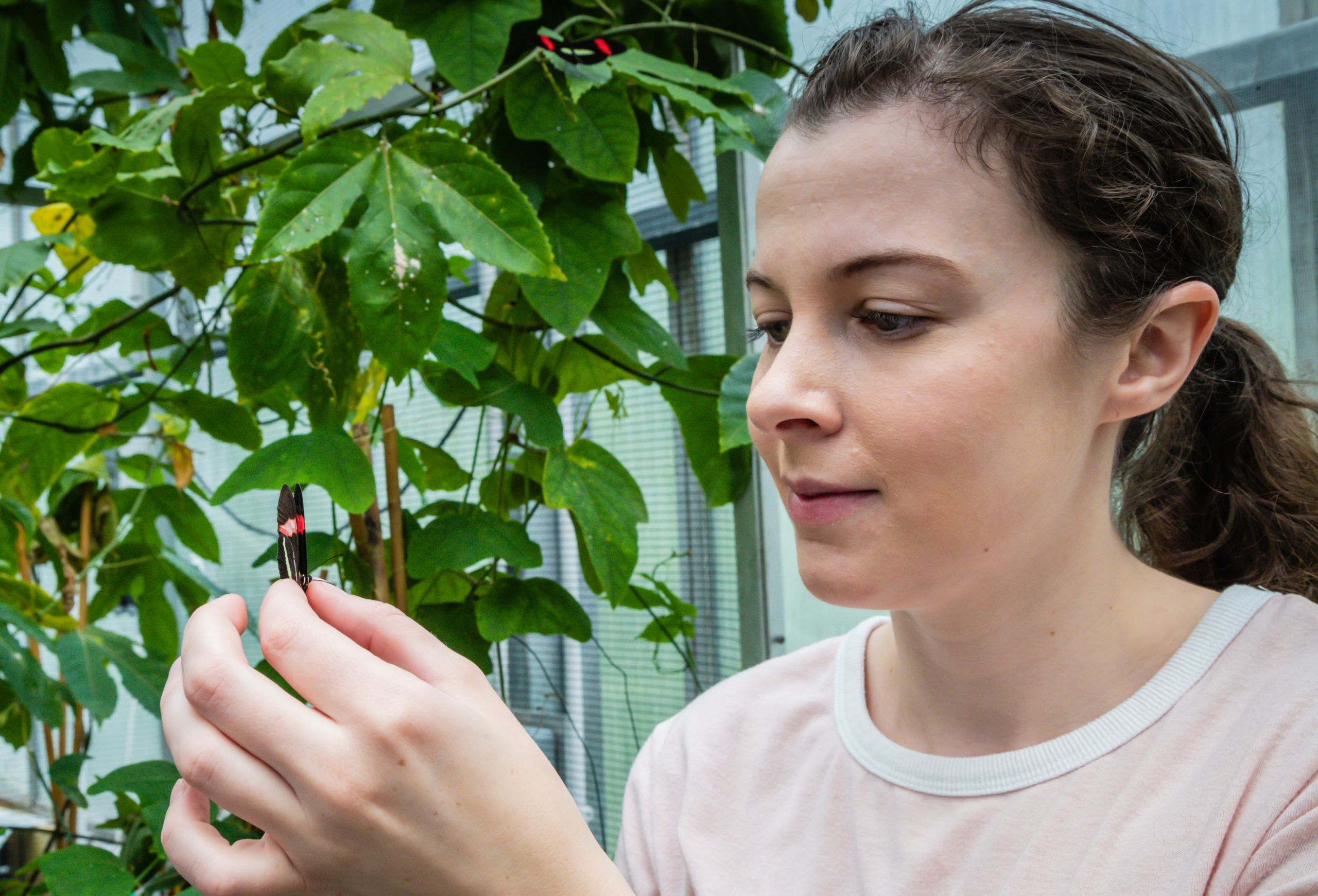
Kathy Darragh inspects a Heliconius butterfly raised by the Butterfly Genetics group in Cambridge
Kathy Darragh inspects a Heliconius butterfly raised by the Butterfly Genetics group in Cambridge
Butterfly conservation scientists Dr Andrew Bladon and Matt Hayes agree. “If you want to understand how and why butterflies respond to temperature, you’ve got to know what’s going on in the genetics,” says Bladon. “There’s bound to be increasing collaboration to answer these sorts of questions.”
Bladon is in the middle of an ambitious, high-stakes project investigating how individual butterflies from different species have responded to temperature change over the last ten years. “I’m interested in how this impacts on their choice of habitat,” Bladon explains, “whether it affects their behaviour; and what all of this means for their conservation.”
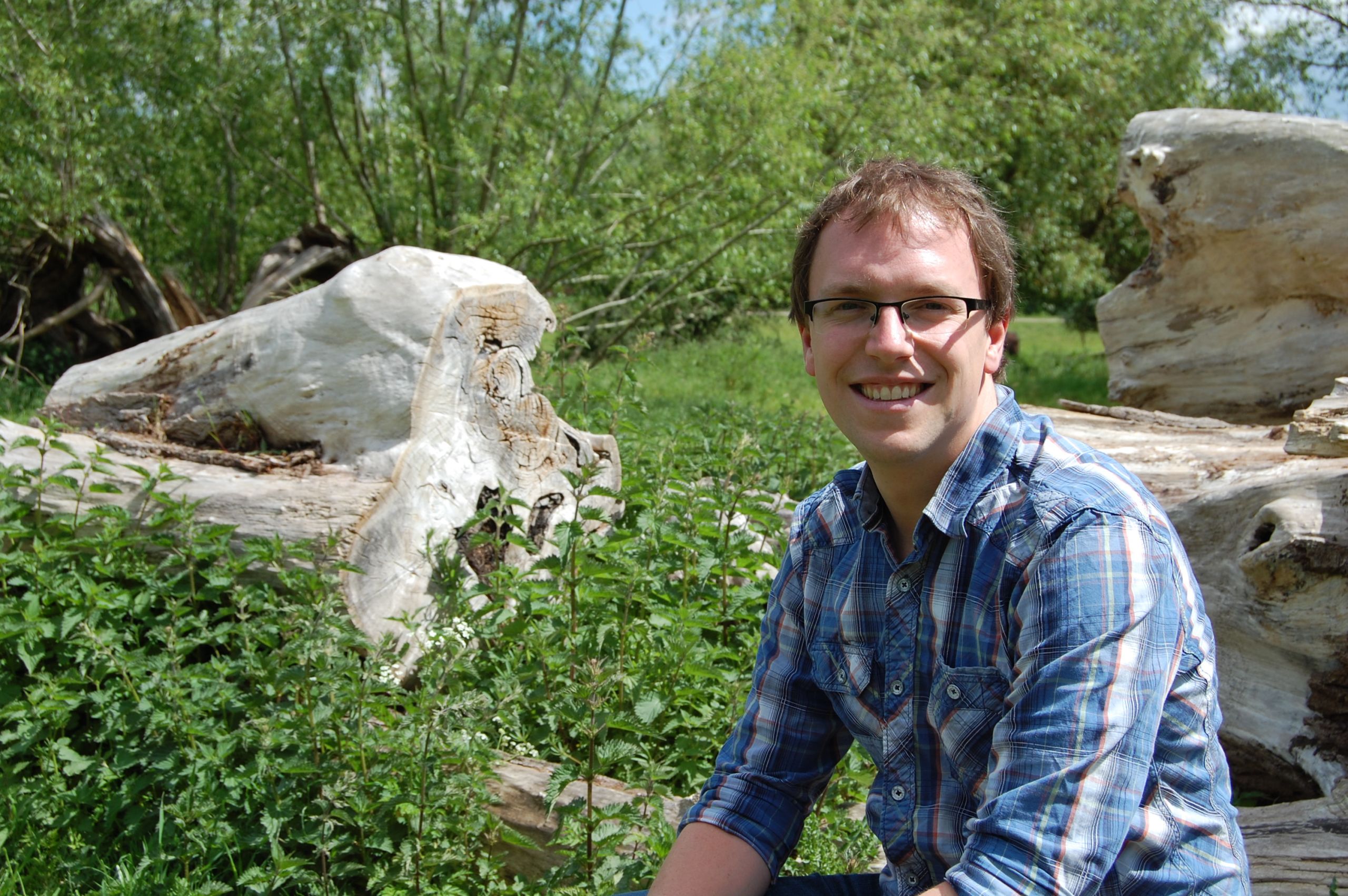
Andrew Bladon in Cambridge
Andrew Bladon in Cambridge
“Globally, climate change is bad news for butterflies but it looks like the opposite will be the case in the British Isles. For the foreseeable future, we’re going to gain more butterfly species than we’re going to lose. The species we’re gaining are being pushed out of Spain and France so we need to be ready to have optimal habitat for them as well as for the species that are already here.
“We can’t be complacent. We’ve got such a fragmented landscape and habitat management is generally so poor that it’s just not supporting species well enough. This is something that we can probably address more easily than climate change itself which, let me be clear, also needs to be tackled. But we can create more reserves, we can manage them better, we can work out how to look after the wider landscape in a more wildlife friendly way. The aim of my research is to work out how we should go about that.”
“We’re used to the idea that you manage habitat to create short grassland or scrubby patches but we’re not used to management for temperature and that’s potentially really important.”
Across a landscape, at a fine scale, temperatures can vary dramatically. And landscapes that are more diverse in their topography are better at retaining species over ten or twenty years.
“The hypothesis suggests that’s because they have more diverse microclimates and so more species can thrive within them,” Bladon explains. “But we don’t really know what individual species are seeking out or what impact different management actions have on temperature.”
In 2018, Bladon led a team of researchers and volunteers recording information about more than 12,000 butterflies at four Wildlife Trust reserves in Bedfordshire, Cambridgeshire and Northamptonshire.
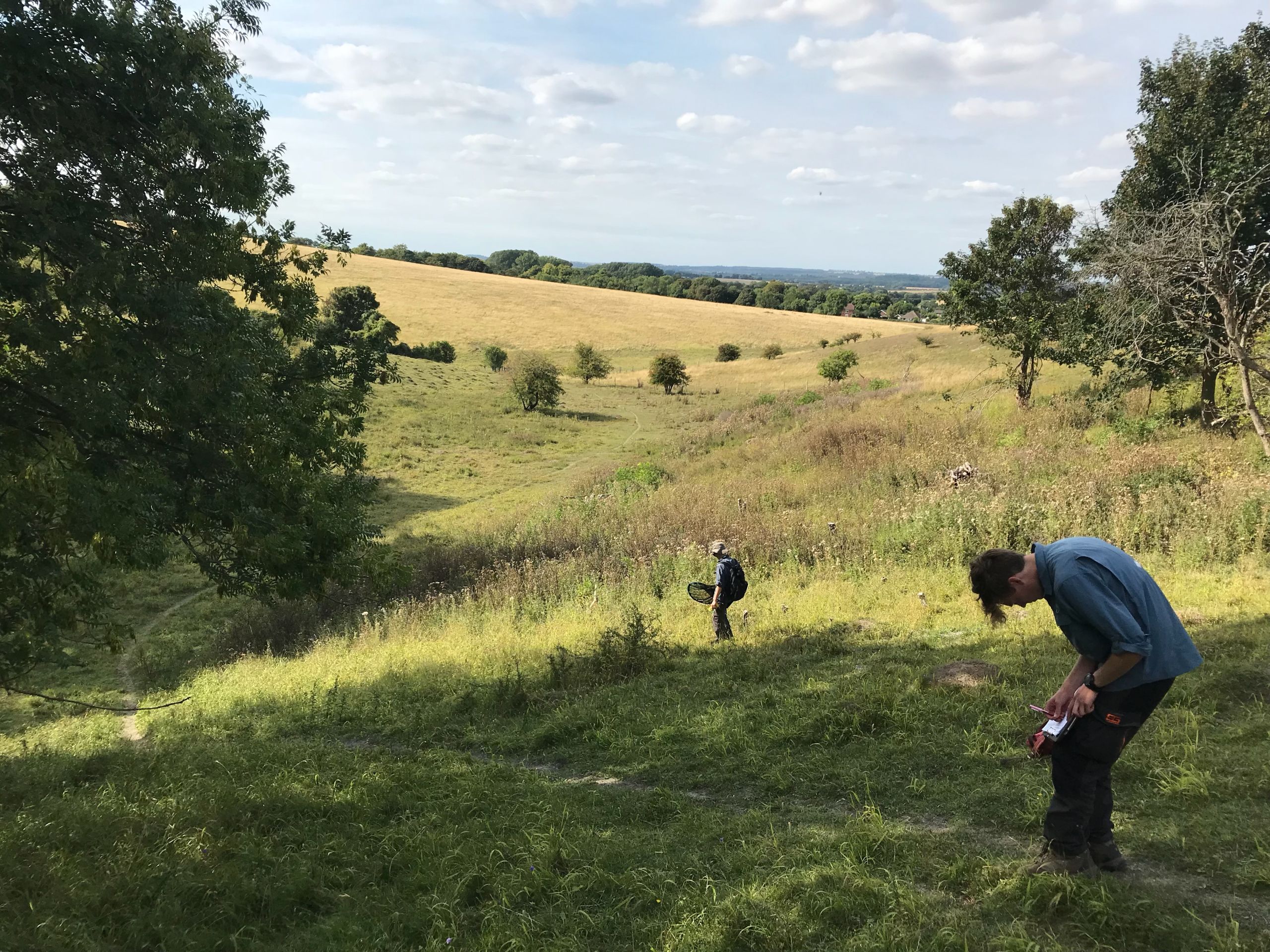
As part of this painstaking work, the body temperatures of 2,073 butterflies were compared with air temperature. “It’s well known that butterflies bask in the sun with their wings open to warm up,” Bladon says, “but the effectiveness of this strategy varies considerably between species. That impacts on how active they can be.
“On a cold day, the species which are good at heating themselves tend to be active earlier, which means feeding, mating and defending their territory. The most adept regulators of body temperature relative to air temperature are likely to handle climate change better.”
This ongoing research should help to predict which species are most vulnerable but perhaps more importantly, Bladon is revealing the crucial role that microclimates play in helping butterflies to warm and cool themselves. Even within study areas the size of a football pitch, Bladon has found butterfly populations concentrated in pockets of air at a higher or lower temperature than the surrounding air.
These microclimates are created by myriad topographical factors including elevation, aspect and slope as well as vegetation type and density. Bladon says: “Once we’ve fully analysed all of this data, we’ll be well placed to advise the reserves and policy-makers on how to create, restore and maintain the microclimates which help different species of butterfly to thrive.”
But Bladon isn’t just interested in improving individual reserves: he’s trying to inform and encourage the creation of habitat ‘stepping stones’ across the British Isles to help butterflies disperse and extend their range as the climate warms.
“If you look at climatic suitability, we should have seen massive range expansion in loads of species across the UK. We’ve seen that to an extent and there's always a bit of a time lag but the climate is changing faster than species can keep up with. We need to provide this network of habitats or they’ll get stranded and their populations will collapse.”
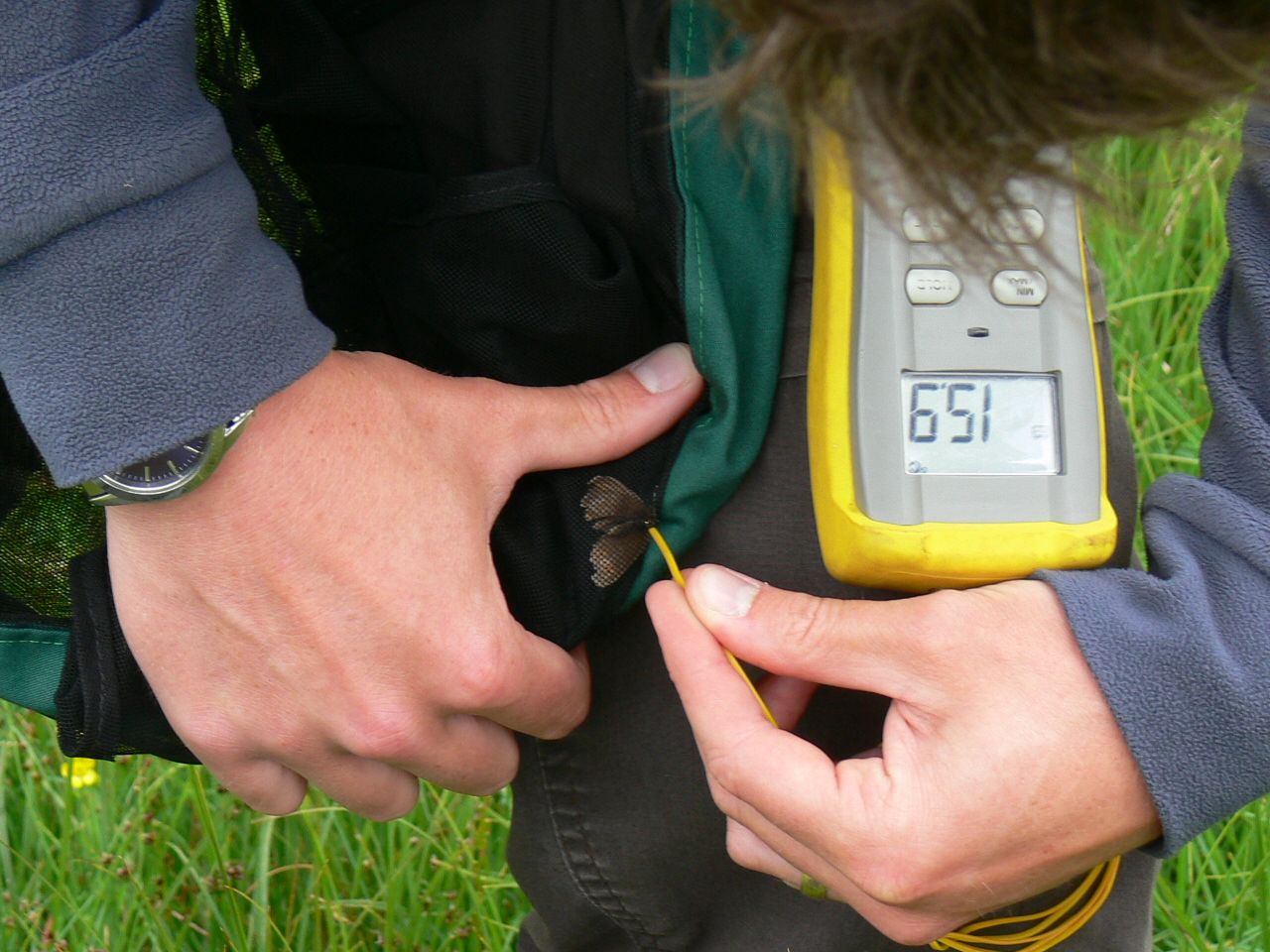
Andrew Bladon takes the body temperature of a butterfly. Photo: Helen Cole
Andrew Bladon takes the body temperature of a butterfly. Photo: Helen Cole
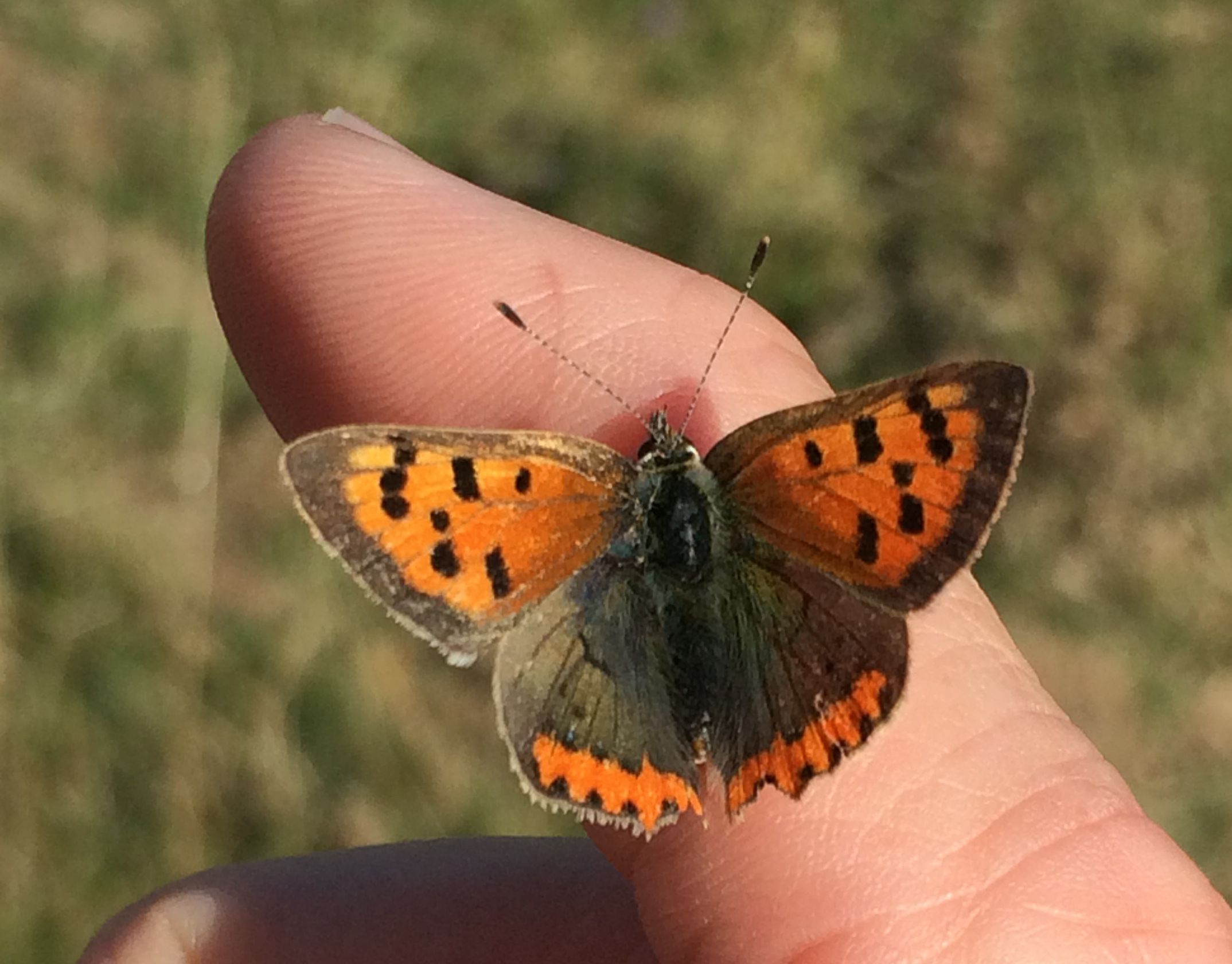
Small Copper butterfly. Photo: Andrew Bladon
Small Copper butterfly. Photo: Andrew Bladon
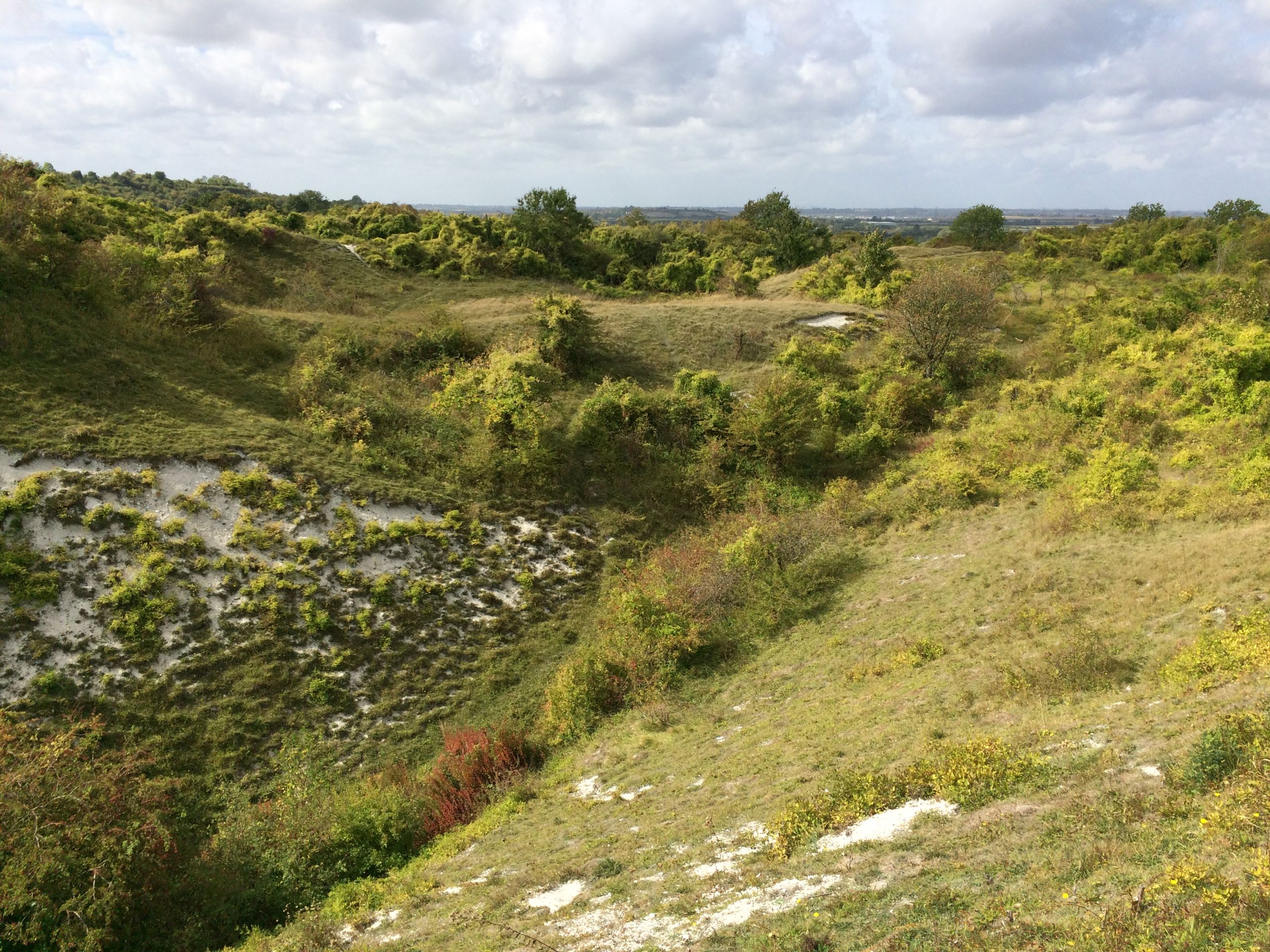
Totternhoe Chalk Quarry in Bedfordshire, one of the key sites studied by Bladon's team. Totternhoe is owned and managed by the Wildlife Trust for Bedfordshire, Cambridgeshire and Northamptonshire. Photo: Andrew Bladon
Totternhoe Chalk Quarry in Bedfordshire, one of the key sites studied by Bladon's team. Totternhoe is owned and managed by the Wildlife Trust for Bedfordshire, Cambridgeshire and Northamptonshire. Photo: Andrew Bladon
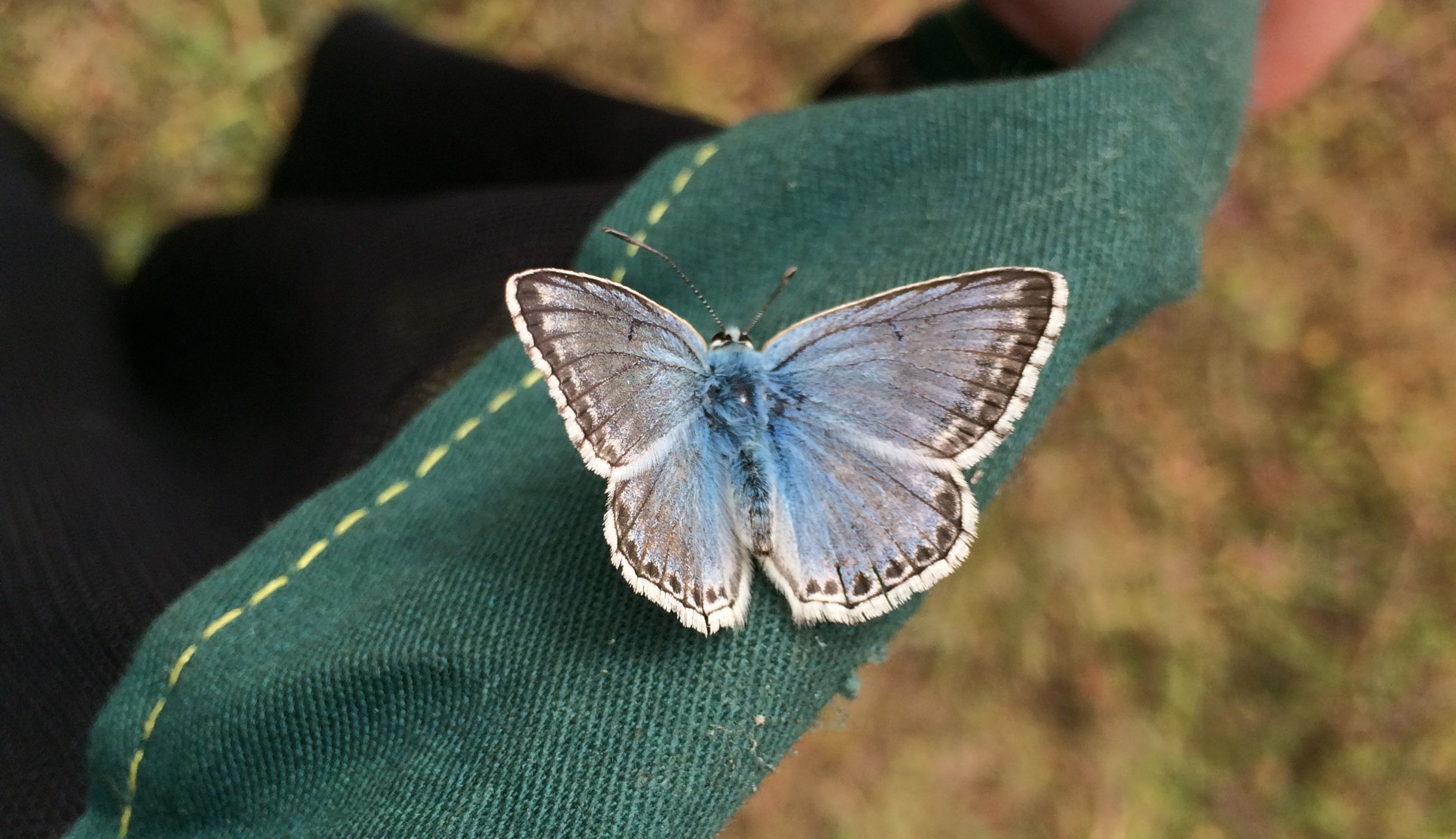
Male Chalkhill Blue butterfly. Photo: Andrew Bladon
Male Chalkhill Blue butterfly. Photo: Andrew Bladon
Matt Hayes’ current work complements Bladon’s with a specific focus on what has long been one of the UK’s most endangered butterfly species: the Duke of Burgundy.
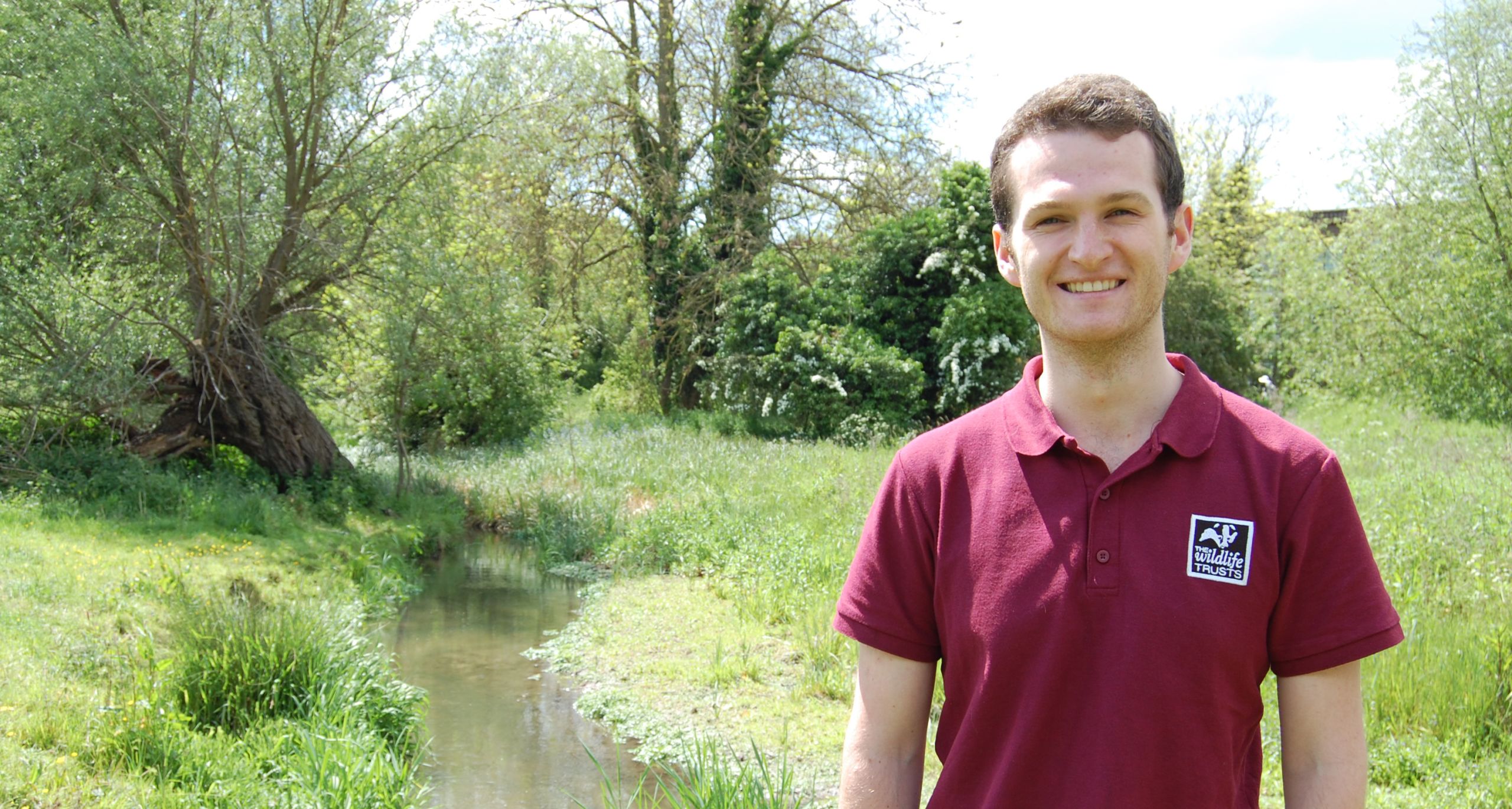
A small spring-flyer with chequered wings, the Duke saw its abundance fall by 42% from 1976-2014, but at the end of this period, it started to make a remarkable recovery - between 2005 and 2014, abundance increased by 67%.
“A warming regional climate may well have contributed to this,” says Hayes, “but improved habitat management has also played an important role.”
For three years, Hayes and colleagues from the Zoology Department and the Wildlife Trust have been investigating the effect that air temperature has on the flight behaviour of the species’ adult males as well as their ability to thermoregulate through their behaviour.
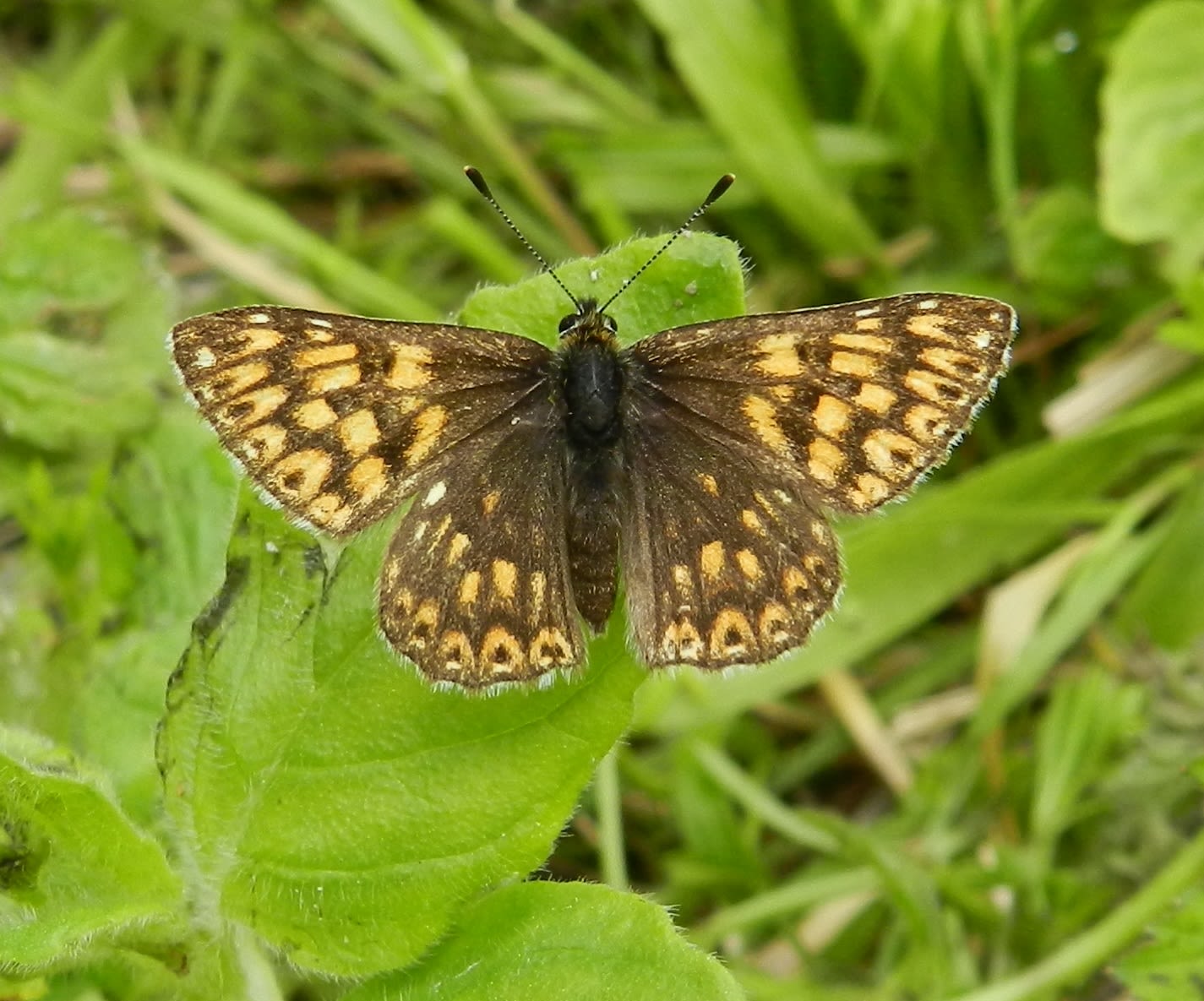
Duke of Burgundy butterfly. Photo: Matt Hayes
Duke of Burgundy butterfly. Photo: Matt Hayes
“The male Duke of Burgundy is very territorial,” Hayes explains fondly. “They defend one metre square patches of sunlight in very sheltered areas of chalk grassland. We found that these butterflies aren’t very effective at regulating their body temperature behaviourally and so they are particularly dependent on the habitat features which offer these relatively high temperatures.”
The research, published recently in the Journal of Insect Conservation, suggests that these conditions enable the kind of energetic flight which male Duke of Burgundy butterflies rely on to defend their territory and intercept mates. “Our findings have useful implications for conservation,” says Hayes.
“The Duke has been a poor disperser, so if it’s going to take advantage of a warmer climate and extend its range north, it will need carefully managed habitat stepping stones.”
This would include some scrub clearance to ensure that foodplants aren’t completely overshadowed but sufficient shelter would have to be retained - a delicate balancing act.
Both Bladon and Hayes excitedly cite the resurgence of Britain’s Large Blue butterfly as an example of what can be achieved when research like theirs shapes nature reserve management. The Large Blue was declared extinct in the UK in the late 1970s but was successfully reintroduced in Somerset. In 2018, the Large Blue enjoyed its best UK summer on record, being identified at 40 sites, including 5,700 individuals on a single hill.
Bladon explains what caused the extinction: “The Large Blue tricks foraging red ants into caring for its larvae and these ants require very short grass. And what happened was that because myxomatosis had killed off so many rabbits, the grass grew a couple of centimetres longer than normal. That led to this ant species being out-competed by another that preferred longer grass, so the Large Blue’s life-cycle broke down. Now the reserves have established a grazing system, the ants are back and the Large Blue is doing really well again.”
Large Blue butterfly. Photo: Paul Ritchie under a CC license.
Large Blue butterfly. Photo: Paul Ritchie under a CC license.
Bladon and Hayes are well aware that nature reserves only offer part of the solution. Private gardens represent a larger total area than all of the UK’s reserves combined so gardening for wildlife is crucial, as is the need to make the agricultural landscape more permeable.
Kathy Darragh is interested in how biodiversity comes about, and her research is helping to unlock astonishing secrets about butterfly behaviour and evolution.
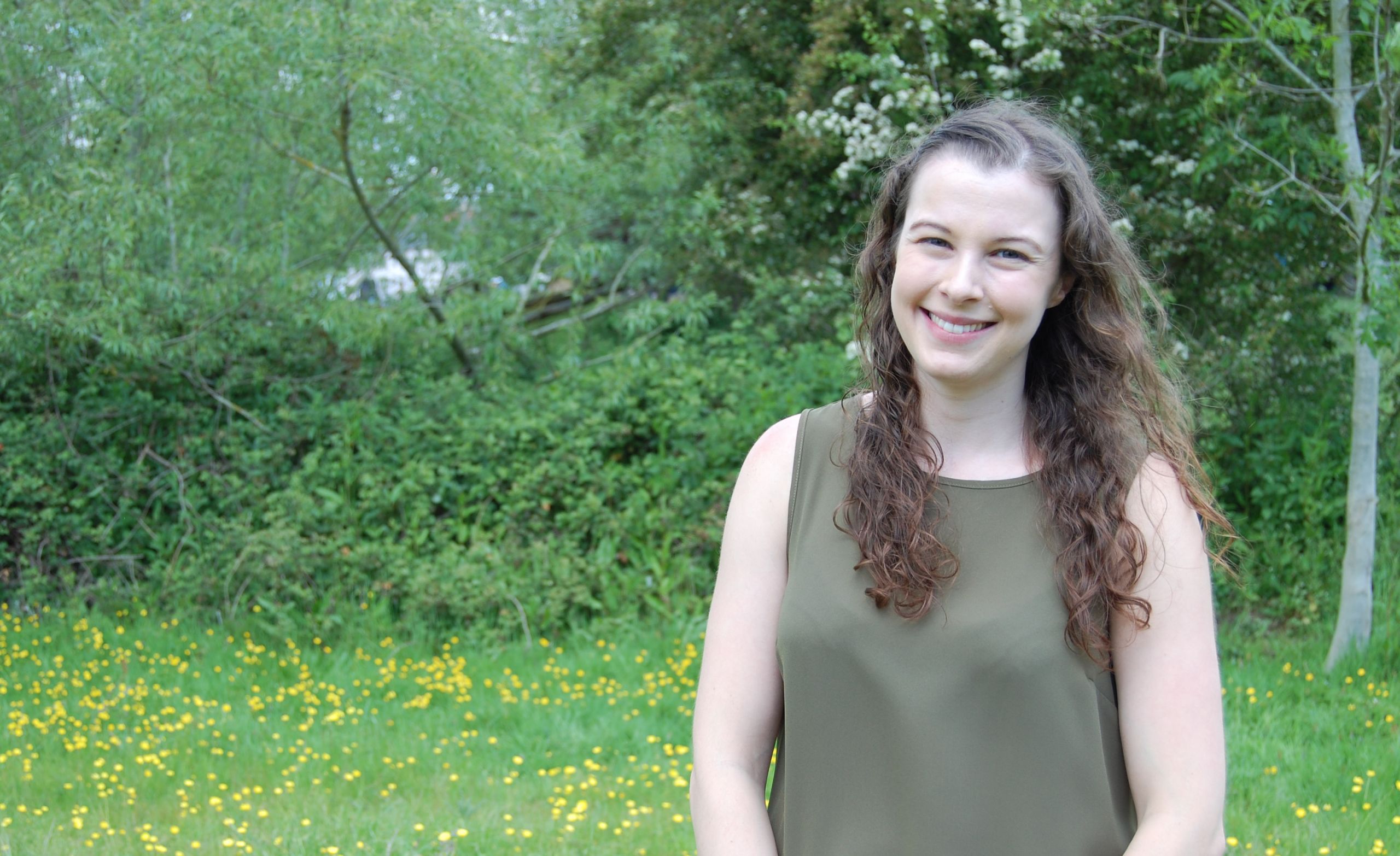
In the mid-nineteenth century, Alfred Russel Wallace realised that Heliconius butterflies, the focus of Darragh’s current work, provided evidence for natural selection and wrote to inform Charles Darwin. “Now we know which genes underlie those wing colour patterns,” Darragh says.
“It’s amazing to think how far we’ve come. Some wing patterns come from species hybridizing and swapping genes. I think Wallace and Darwin would be proud of what we’ve discovered.”
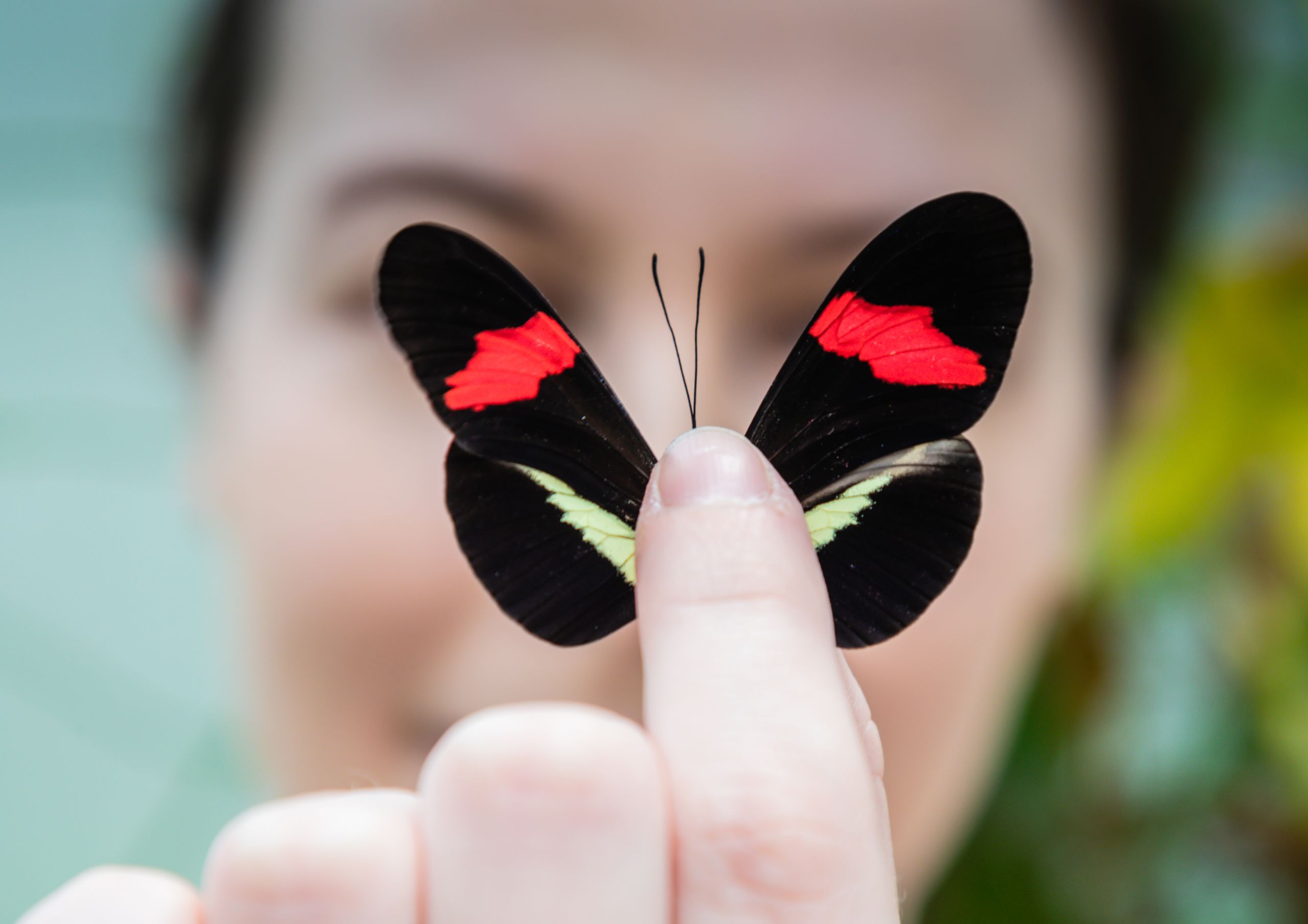
Kathy Darragh with a Postman butterfly, a member of the Heliconius genus.
Kathy Darragh with a Postman butterfly, a member of the Heliconius genus.
“We usually think of butterflies as being these very visual organisms and most work on mate choice has focused on their amazing wing colour patterns. But over the last twenty years, we’ve discovered these cryptic species of Heliconius, individual species that are very closely related and have identical wing colour patterns. So if wing colour pattern isn’t the cue that’s keeping these species reproductively isolated, something else must be.
“So I started to consider the role that pheromones play and during my fieldwork in Panama, we carried out behavioural trials and found that these butterflies do use chemical cues in mate choice. And we found that they actually biosynthesize a lot of these compounds themselves as opposed to just taking them from a plant. I then looked at the genetic basis for these pheromones, how they vary geographically across South America and what all of this means for speciation.”
This field work was a long way from home. Darragh grew up in Northern Ireland where she recalls spending lots of time in rock pools searching for crabs. “I became interested in butterflies through science,” she says, “because they're an amazing system and we can learn a lot about evolutionary principles from that and apply those to other organisms and systems that are less well understood.”
When asked to choose a favourite butterfly, Darragh stands by Heliconius: “Because they’re toxic and rely on their wing patterns to keep them safe, they’re quite happy to be seen. They fly really slowly and tend to visit the same plants every day.
“One of the most common is called the Postman because it has a route through the forest that it follows every day. They have quite an impressive capacity for learning. My fieldwork isn’t quite as idyllic as you might think. The butterflies that we study, including the Postman, really like the roadside and semi-destroyed habitat because they like the light.”
A Postman butterfly
A Postman butterfly
Andrew Bladon started out studying the effects of temperature change on birds but realised that butterflies were a more tractable group for understanding how species are going to respond to climate change. “So I came to butterflies because they were a good study group but now I’ve become very fond of them,” he insists. “You need to be when you’re lying on a muddy patch of grass in the woods trying to identify one.”
“My favourite has to be the Brown Argus. They’re challenging to identify, which is fun, but I also love their behaviour. They sit on grass stems and move all four wings independently to settle themselves down and it’s just super cute. They’re from the Lycaenidae family, which boasts many of my other favourites. Holly Blues are also really sweet. Lots of Lycaenidae have stripy antennae, which you only notice if you get really close, for example Green Hairstreak.”
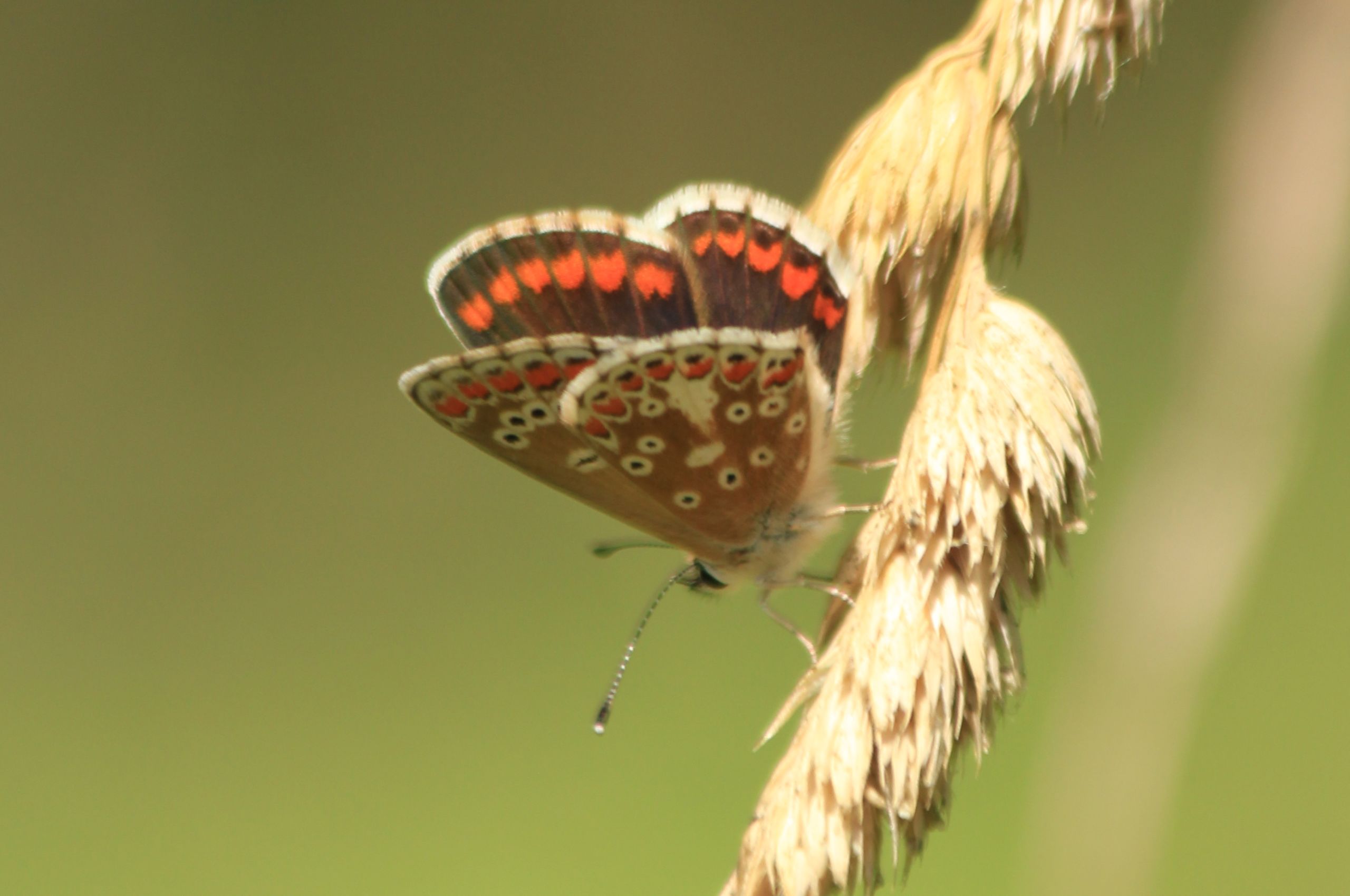
A Brown Argus butterfly moving its wings. Photo: Andrew Bladon
A Brown Argus butterfly moving its wings. Photo: Andrew Bladon
Matt Hayes recalls being the kid who was always interested in creepy crawlies and “then at the end of my undergraduate degree, I studied the life cycle of butterflies and that was it”.
“My favourite,” he says, “has to be the Large Blue mostly because its life-cycle is so crazy. Its young feed on the grubs of an ant which they trick into taking care of them by mimicking the chemical signature of their nest. Then they turn into butterflies, crawl above ground and fly off. When people think about butterflies, they don’t normally imagine a social parasite. They also represent a great conservation success story.”
Female Large Blue butterfly. Photo: Paul Ritchie under a CC license
Female Large Blue butterfly. Photo: Paul Ritchie under a CC license
All three researchers are anxious about what the future holds for butterflies globally, but remain confident that their research can make a difference. “We know what needs doing,” says Bladon, “it’s just whether there’s the political will to roll out research-based strategies widely enough and support them long-term.”



